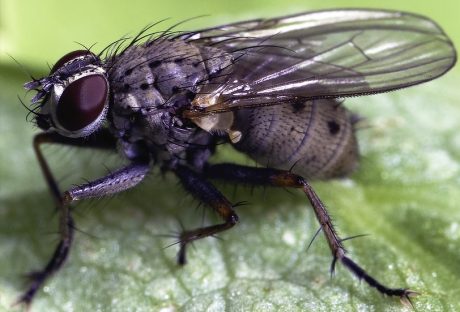Tag: bed bug infestations

Top 10 Most Common U.S. Household Pests: The Creepy Crawlers That Take the Cake
No one wants to deal with uninvited guests, especially not those of the multi-legged and exoskeletal variety. Unfortunately, sometimes these tiny creatures find their way inside no matter how hard we try to keep them out in the cold. Identifying a pest problem isn’t enough on its own--you must also take practical measures to eliminate any bugs in your home. Learning about the most common pests will help you take charge and show your creepy-crawly houseguests the door. 1. Ants Attracted by the sugars in food, ants often turn up in the kitchen. Depending on the type of ant and the size of the infestation, you might need professional help eliminating ants, though over-the-counter ant traps and regular cleaning help, too. 2. Termites Like bees, termites in a colony serve different functions. Wingless worker termites have whitish bodies and brown heads, while others have wings and darker bodies. Termite treatment needs to happen early and professionally. Don’t wait to call once you identify the telltale piles of sawdust and chewed wood, or even see the critters themselves. Termites can inflict enough damage to destroy a home’s foundation in just months. 3. Cockroaches While cockroaches generally don’t bite humans, they do spread bacteria and destroy foodstuffs. Specifically, roaches seek out sources of water within a home. Notoriously tricky to kill, cockroaches can die of dehydration within a week. In theory, dehumidifiers can help discourage roaches. However, by the time the first generation dies, they will have already laid egg cases with up to fifty eggs. 4. Spiders Spider bites can cause reactions and inflammation. Certain species are poisonous, others deadly if untreated, and their webs collect dust over time. Like cockroaches, female spiders lay multiple eggs in batches. Spiders are attracted by other small insects in the home, such as gnats and flies. 5. Millipedes Millipedes eat damp, decaying wood and tend to prefer dark crannies. These long-bodied bugs secrete a smelly compound when they feel threatened. Millipedes lay hundreds of eggs at a time. Once these pests find their way inside, they tend to multiply rapidly. 6. Fleas Generally carried indoors by household pets like cats and dogs, fleas are almost impossible to eliminate without a professional to identify the type of flea. These tiny bloodsuckers hide and lay eggs in clothes and carpets. Worst of all, fleas live off of blood. Itchy red bites are often the first sign that you have human fleas because these insects are often too small to see. 7. Bed bugs These small, brown, oval-shaped bugs also live off of blood and mostly bite people, generally at night. Apartment buildings are notorious for bed bug infestations. Once inside a mattress or other material, bed bugs leave noxious stains behind that are next to impossible to remove. 8. Moths Different types of winged moths are attracted to clothing or food. Once the moth eggs hatch, the larvae stain and eat holes in fabrics. While mothballs can help keep moths out of sealed storage areas and flypaper catches adult moths, the best way to rid a home of moths permanently is to hire pest control professionals. 9. Stink bugs Aptly named, these bugs give off a terrible smell as a warning when disturbed and tend to come inside as the weather cools. So, how do you make stink bugs stay outside where they belong? Individual stink bugs may be trapped live and released outside, and proper sealing on windows and doors goes a long way. 10. Rodents Even more than most insect infestations, rodents cause damage to all sorts of household goods, spread disease, and even take up residence inside walls. Wrap up Keep in mind that the most common pests vary by region and other factors, including the season and type of home. Renters, for instance, are much more likely to end up tackling earwigs and silverfish than homeowners. While insects may be the future of sustainable food, most people would prefer to keep them out of the house. Read Also: 4 Benefits of Pest Control Services What These People Did Wrong in Using Pesticides DIY Ways to Control Pests in Your Garden
READ MOREDetails















